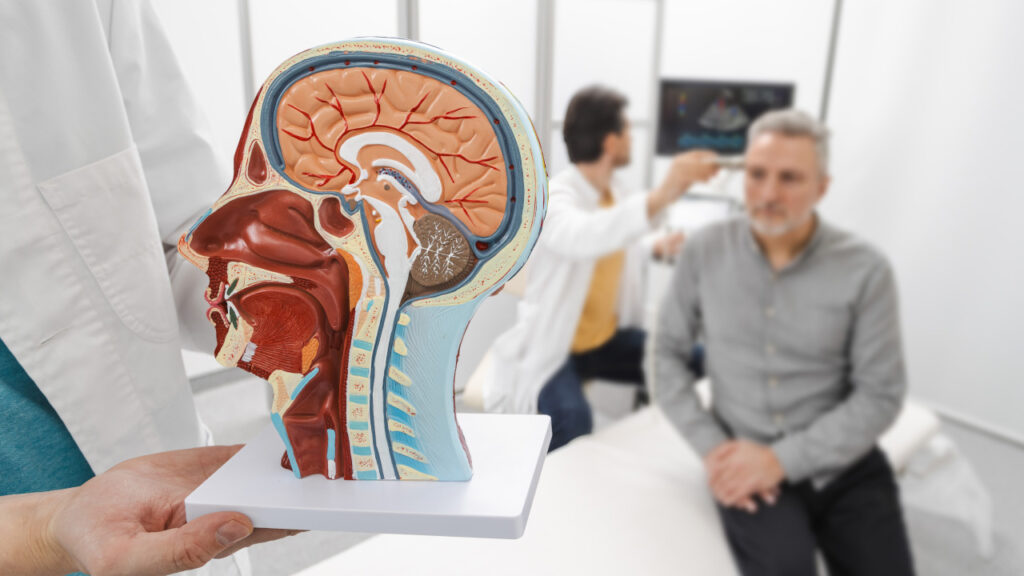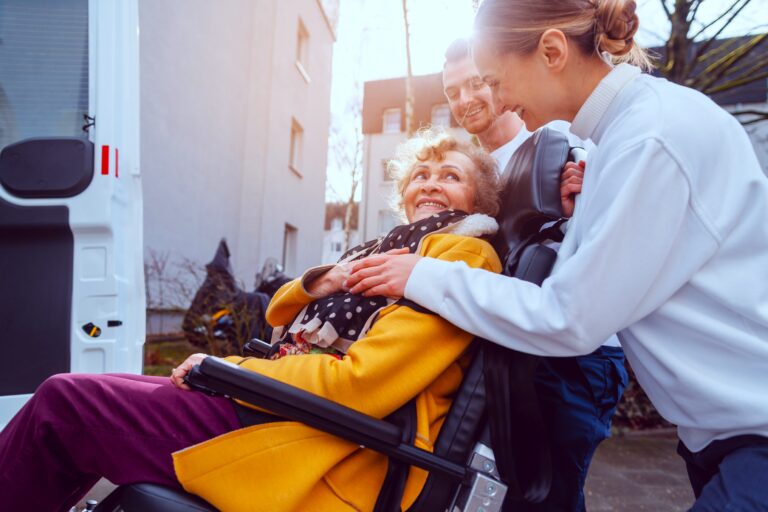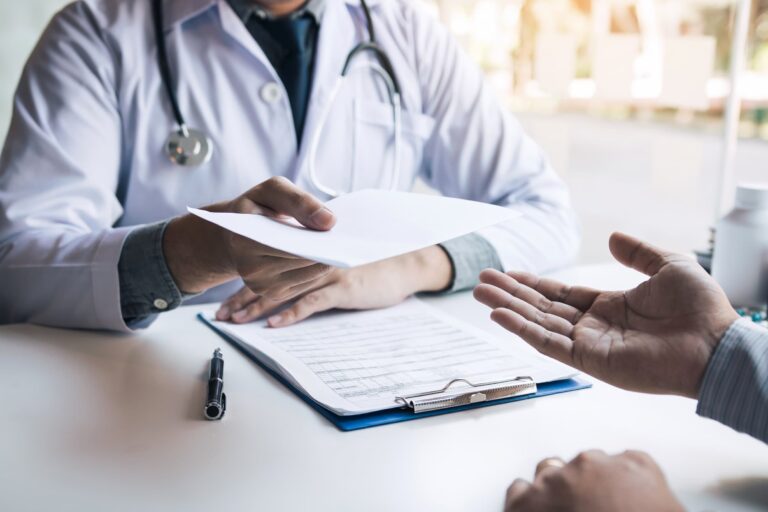It is one of the leading causes of death in Portugal. Stroke not only profoundly changes the lives of those who have suffered it, but also those of their families. Not all strokes are the same and the physical, emotional and social effects vary from person to person, but with adequate support, adaptation and follow-up, it is possible to recover quality of life.
If you’re looking for information on this topic, this article is for you.
Key points of the article
- What changes in the life of someone who has suffered a stroke
- Physical and emotional needs after stroke
- Adapting the home and routines for greater autonomy
- Stroke symptoms: the 5 F’s to remember
- Factors that can cause a stroke
- How to act in the event of a new stroke
- Types of stroke and their treatments
- Psychological support and the role of the family
- Real testimonies of overcoming.
What changes in the life of someone who has suffered a stroke?
Suffering a stroke is a big change. Day-to-day life becomes more challenging, either because people facing it may suffer some limitations in speech, movement, memory or vision. There are people whose changes are temporary and others whose changes can become permanent and require them to go through a learning process for tasks such as getting dressed, preparing meals or even communicating.
These changes go beyond the body: family routine, social roles and even a person’s self-confidence can be profoundly affected.
Physical and emotional needs after a stroke
Suffering a stroke can represent a new beginning for many people. The impact is profound, especially as it can mean the loss of some independence, which generates frustration and uncertainty. That’s why it’s essential to ensure continuous support – not just physical, but also emotional. This support is essential for the person to adapt to the new reality and gradually recover their quality of life.
Changes in mobility and communication
As mentioned, many stroke survivors lose strength on one side of their body (hemiparesis) or have difficulty walking, talking or even eating. Physiotherapy, speech therapy and occupational therapy are essential to recover functions and promote autonomy. This rehabilitation should begin as soon as possible.
Post-stroke fatigue, anxiety and depression
A frequent complaint is the constant fatigue that arises after small tasks. In addition, the risk of anxiety and depression increases due to the loss of control over their lives. It is essential to provide psychological support and create an environment that fosters self-esteem and well-being.
Adapting the home and routines for greater autonomy
Adapting the home and daily routines is essential to facilitate the integration of people with strokes into their new reality. These changes make the environment safer and more functional, promoting comfort, autonomy and well-being on a daily basis.
Useful equipment and aids (e.g. wheelchair)
Features that can make all the difference in everyday life:
- Wheelchairs and walkers
- Support bars in the bathroom and shower
- Bath chairs and folding beds
- Adapted utensils for food and clothing
- Applications and devices to facilitate communication.
Choosing the right equipment depends on each person’s limitations and should be done with the support of health professionals.
Safety, hygiene and food care
Prevention is better than cure. Especially when it comes to falls and infections. With regard to safety, some suggestions include: removing carpets, clearing corridors and reinforcing lighting. Personal hygiene may require some help, but the main thing is to respect the person’s privacy. When it comes to eating, it’s important to adapt the consistency of food or opt for specific diets to prevent further events.
Symptoms of a stroke
The 5 F’s are a simple and practical way of recognizing the main symptoms of a stroke.
In Portuguese, they correspond to:
- F for Face: drooping face or asymmetrical smile
- F for Strength: weakness on one side of the body
- F for Speech: confused, slurred speech
- F for Severe headache: intense and sudden, with no apparent cause
- F for Lack of vision: in one or both eyes.
If you notice any of these signs, call 112 immediately. Time is crucial to minimize brain damage.
Factors that can cause a stroke
There are several factors that can trigger a stroke, from controllable factors to others that may not be controllable.
Controllable:
- Hypertension (main cause)
- Diabetes, high cholesterol
- Smoking, alcohol, sedentary lifestyle, obesity
- Poor diet, stress, heart disease
- Misuse of medication or drugs.
Uncontrollable:
- Age: risk increases significantly after the age of 55 but 25% of cases occur in young people
- Family history of stroke or cardiovascular disease
- Sex: men have a higher risk, but women tend to have worse consequences
- Previous stroke or transient ischemic attack (TIA).
How to act in the event of a new stroke: signs and first aid
Being prepared and knowing how to identify the signs of a new stroke can save lives. The main symptoms include:
- Sudden weakness on one side of the body
- Difficulty speaking or understanding
- Changes in vision
- Dizziness, loss of balance
- Intense and sudden headache.
In the event of suspicion, call 112 immediately. Time is of the essence: the sooner the person is assisted, the greater the chances of recovery.
Types of stroke and treatments
Being prepared and knowing how to identify the signs of a new stroke can save lives. The main symptoms include:
- Sudden weakness on one side of the body
- Difficulty speaking or understanding
- Changes in vision
- Dizziness, loss of balance
- Intense and sudden headache.
In the event of suspicion, call 112 immediately. Time is of the essence: the sooner the person is assisted, the greater the chances of recovery.
Ischemic stroke (obstruction of an artery - around 85% of cases) Emergency treatment:
Emergency treatment:
- Intravenous thrombolysis with drugs (e.g. alteplase) to dissolve the clot
- Mechanical thrombectomy for endovascular clot removal (in specialized centers)
Long-term treatment:
- Anticoagulant or antiplatelet drugs (to prevent new clots)
- Intensive rehabilitation: physiotherapy, speech therapy and occupational therapy
- Control of risk factors (blood pressure, diabetes, cholesterol).
Psychological and social support: the role of family and community
The involvement of family, carers and friends is crucial to recovery. Knowing how to listen, respecting the person’s pace and encouraging them without infantilizing them is important. Suggesting support groups, day care centers and local associations helps to combat isolation and promote social integration.
The mental health of caregivers must also be protected. Sharing responsibilities, seeking support and taking breaks is essential to avoid emotional exhaustion.
Testimonies from people who have suffered a stroke
“I wasn’t at all prepared for what came next. Recovery is a long process, where even the simplest things, like learning to sit up in bed, become a challenge.” – Diana Ramos, 47.
This report brings together several testimonies from people who have suffered a stroke, faced the challenges of recovery and shared their stories of overcoming and resilience.
Living with stroke is possible with the right support
A stroke marks a before and after in anyone’s life, but it doesn’t define their future. With medical care, adjustments to the environment and a solid support network, it is possible to regain autonomy and rediscover a new way of living. The key is empathy, patience and valuing every small achievement.
Important links on this subject:
The content of this blog is informative. They are not a substitute for medical diagnosis or treatment. Always consult a health professional.




